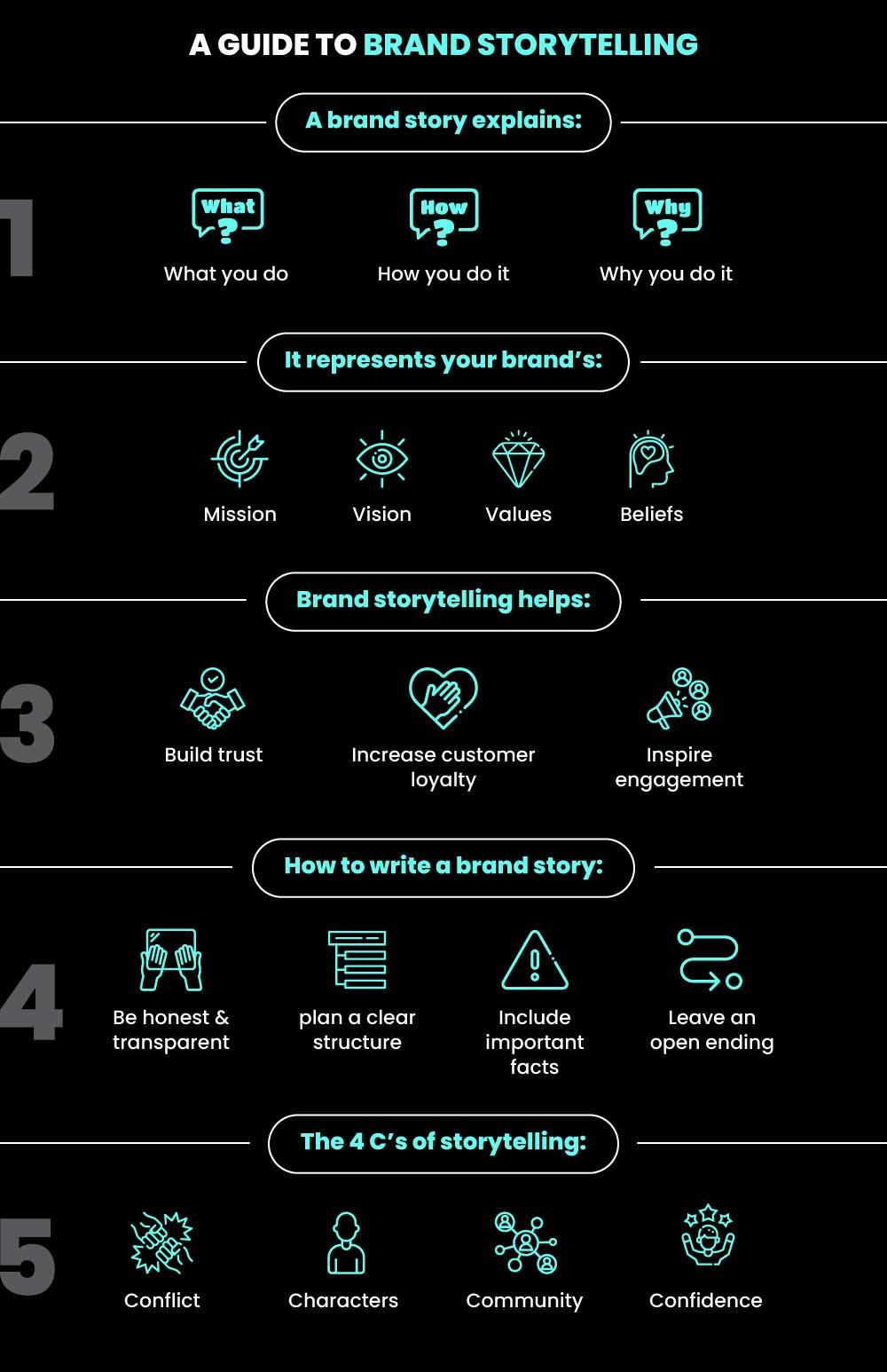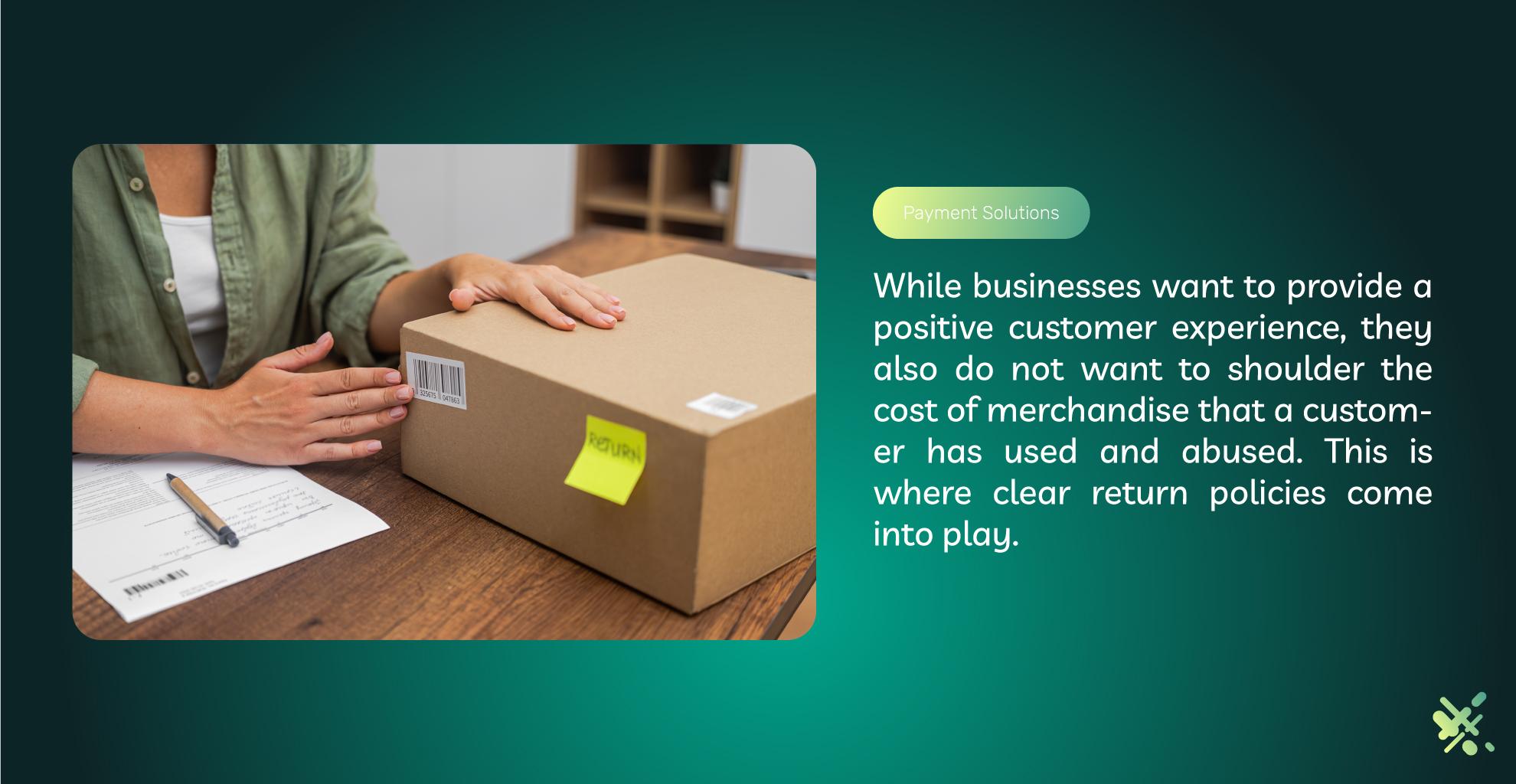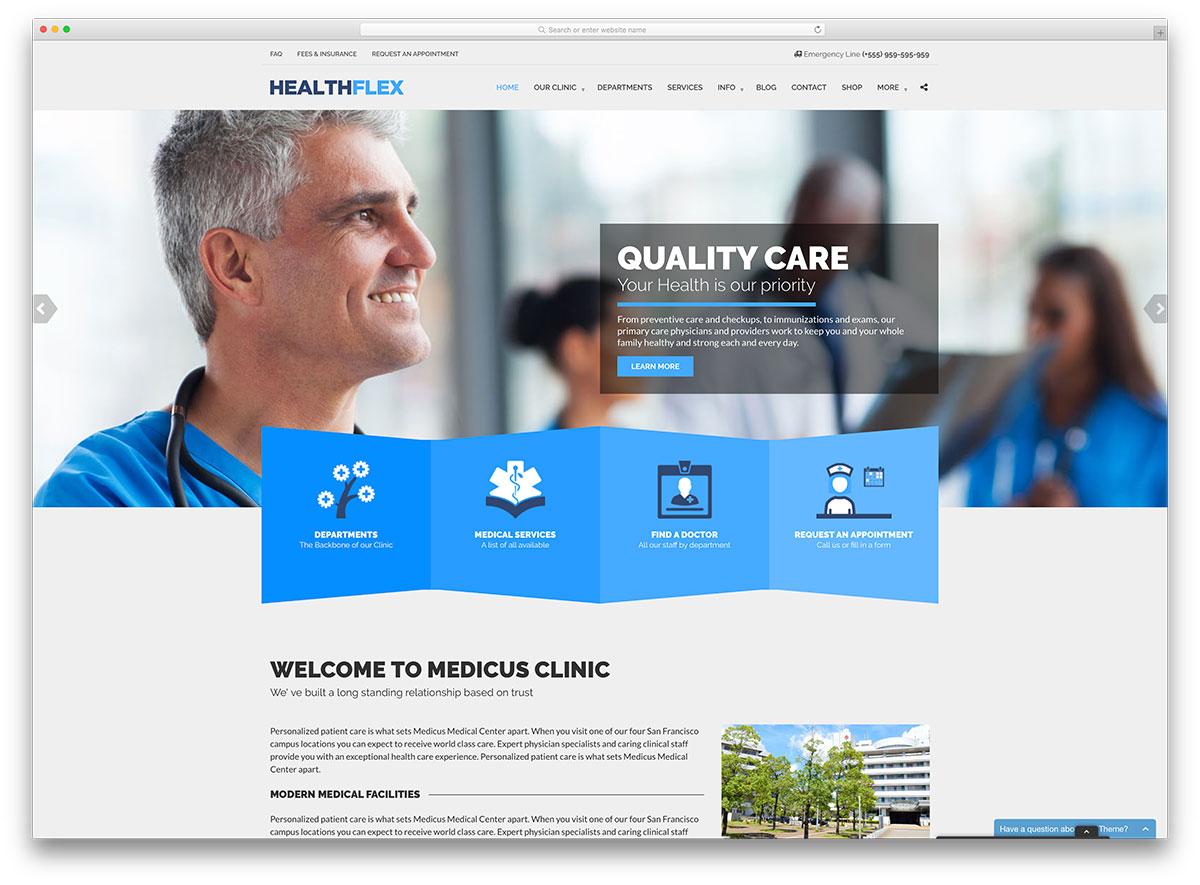In the bustling world of e-commerce, where countless stores compete for attention, trust can be your most valuable currency. Imagine walking into a shop where the owner greets you with a warm smile, answers your questions, and genuinely cares about your needs. That’s the kind of experience online shoppers crave, albeit in a digital form. For new e-commerce stores, establishing trust right from the start is crucial for turning casual browsers into loyal customers. But how do you create that sense of trust through content? In this article, we’ll explore effective strategies for crafting trust-building content that not only showcases your products but also resonates with your audience on a personal level. From authentic storytelling to transparent communication, we’ll guide you through the essential elements that can transform your new store into a trusted destination. Let’s dive in and unlock the secrets to winning your customers’ hearts—and their business!
Understanding Your Audience to Craft Authentic Content
In the ever-evolving world of e-commerce, understanding your audience is the cornerstone of creating content that resonates and builds trust. When new customers land on your site, they are seeking a connection, not just a transaction. By diving deep into the demographics, preferences, and pain points of your target market, you can tailor your content to speak directly to their needs and aspirations.
Start by creating detailed customer personas. These are fictional representations of your ideal customers based on real data and insights. Consider factors such as:
- Age – Knowing the age range helps in adjusting your tone and style.
- Interests - Understanding what excites them allows for engaging content.
- Pain Points - Identifying their challenges helps you position your products as solutions.
Utilize tools like surveys, social media analytics, and customer feedback to gather data. This information is invaluable in crafting authentic content that resonates. For example, if your audience values sustainability, showcasing your eco-friendly practices can significantly enhance trust and loyalty.
Another effective approach is to engage with your audience through interactive content. This includes polls, quizzes, and live Q&A sessions. Not only does it provide insights into your audience’s preferences, but it also fosters a sense of community. When customers feel heard and valued, they’re more likely to develop trust in your brand.
Lastly, consider creating a content calendar that aligns with your audience’s interests and seasonal trends. This helps in maintaining consistency and relevance. A simple table can help visualize this strategy:
| Month | Focus Topic | Content Type |
|---|---|---|
| January | New Year Resolutions | Blog Posts & Social Media |
| February | Valentine’s Day Promotions | Email Campaigns |
| March | Spring Cleaning Tips | Video Tutorials |
By genuinely understanding your audience and continually refining your approach, you’re not just selling products; you’re building a community of loyal customers who trust your brand and share your values. Authentic content crafted with intent will ultimately set your e-commerce store apart in a crowded marketplace.

Showcasing Genuine Customer Testimonials for Credibility
When it comes to establishing trust with potential buyers, nothing beats real experiences shared by satisfied customers. Testimonials serve as a powerful tool that can sway the decision-making process for new shoppers. By highlighting authentic voices from your clientele, you can build a bridge of trust that encourages purchases.
Consider implementing a dedicated testimonials section on your website. This could include:
- Written Reviews: Short snippets from customers about their experiences with your products.
- Video Testimonials: Clips where customers share their stories, providing an engaging experience.
- User-Generated Content: Photos of customers using your products, adding a personal touch.
To further enhance credibility, ensure that testimonials are genuine and varied. You might want to create a simple table showcasing different customer feedback. Here’s how you can present it effectively:
| Customer | Product | Feedback |
|---|---|---|
| Jane D. | Eco-Friendly Water Bottle | “I love this bottle! It’s stylish and keeps my drinks cold for hours.” |
| Mark S. | Organic Coffee | “Best coffee I’ve ever tasted! I can’t start my day without it.” |
| Lisa B. | Yoga Mat | “The grip is fantastic, and it’s super comfortable for my workouts!” |
By displaying these testimonials prominently on your site, you not only showcase customer satisfaction but also foster a community of trust. Remember, authenticity is key; encourage your customers to share their honest opinions. This transparency will resonate with potential buyers and drive conversions.
Don’t forget to regularly update your testimonials. New feedback keeps your content fresh and relevant, reflecting your commitment to customer satisfaction. By continually engaging with your audience and showcasing their voices, you can solidify your e-commerce store as a trustworthy destination for shoppers.

Creating Engaging Product Descriptions That Resonate
Crafting product descriptions that not only inform but also engage your audience is essential for converting visitors into loyal customers. To achieve this, it’s important to think beyond traditional descriptions and tap into the emotional connection your products can create. Consider using storytelling techniques to illustrate the benefits of your products in a relatable way. By painting a vivid picture, you can help potential buyers envision how your product fits into their lives.
When writing descriptions, focus on the unique features that set your product apart. Don’t just list specifications; instead, explain how these features translate into benefits. For example, instead of saying “made from organic cotton,” you could describe it as “crafted from 100% organic cotton for supreme softness, ensuring comfort while being gentle on the planet.” This shifts the focus from what the product is to how it positively impacts the customer’s life.
Utilizing sensory language is another powerful technique. Engage your audience’s senses by describing how your product looks, feels, smells, or tastes. This not only makes your description more vivid but also helps customers form a mental image of the experience they can expect. Phrases like “the rich aroma of freshly brewed coffee” or “the luxurious feel of a silky smooth finish” can transport potential buyers right into the moment.
Furthermore, consider using social proof to build trust. Including snippets of customer reviews or testimonials within your product descriptions can enhance credibility. You could format this as follows:
| Customer Review | Rating |
|---|---|
| “This coffee maker has transformed my mornings!” | ⭐⭐⭐⭐⭐ |
| “a blender that can tackle anything!” | ⭐⭐⭐⭐⭐ |
Lastly, always include a clear call to action at the end of your product description. Encourage your visitors to take the next step, whether it’s adding the item to their cart, signing up for a newsletter, or exploring related products. A simple phrase like “Discover the joy of brewing your perfect cup today!” can create a sense of urgency and motivate customers to act.

Utilizing High-Quality Images and Videos to Build Trust
In today’s digital marketplace, the visual appeal of your e-commerce store can make or break the first impression, especially when it comes to establishing trust with potential customers. High-quality images and videos are more than just eye-catching elements; they serve as a critical bridge between your brand and your audience. When customers can see your products in detail, they feel more confident in their purchasing decisions.
Consider the following benefits of using top-notch visuals:
- Enhanced Perception of Quality: Crisp, clear images showcase the quality of your products. Customers associate high-resolution visuals with reputable brands, making them more likely to trust your offerings.
- Improved Engagement: Engaging videos can tell a story about your products, demonstrating their features and benefits in a relatable way. This engagement keeps potential buyers interested and invested.
- Reduction in Returns: By providing detailed views and usage videos, customers have a better understanding of what they are purchasing. This transparency helps to decrease return rates.
Utilizing lifestyle images can also be a game-changer. These images allow customers to envision how your products fit into their lives, creating an emotional connection. For instance, instead of just showing a pair of shoes on a plain background, depict them in a vibrant urban setting. This contextual imagery can lead to higher conversion rates as it resonates with consumers on a personal level.
When incorporating videos, consider the following formats:
| Video Type | Description |
|---|---|
| Product Demos | Showcase how the product works and its key features. |
| Customer Testimonials | Share authentic experiences from satisfied customers. |
| Behind-the-Scenes | Offer a glimpse into your brand’s story and product creation. |
To ensure that your imagery and videos are effective, maintain consistency in style and tone. This not only strengthens your brand identity but also builds a cohesive experience for your audience. Regularly update your visuals to keep them fresh and relevant, reflecting any changes in your product line or brand ethos. By investing in high-quality content, you forge a path toward trust and loyalty with your customers, setting your e-commerce store up for long-term success.

Establishing a Transparent Brand Story That Connects
Every e-commerce store has a unique journey, and sharing that journey can be a powerful way to connect with your audience. When crafting your brand story, aim to be genuine and transparent. Customers today appreciate honesty and are more likely to trust brands that show their human side. Here are some essential elements to consider:
- Your Origin: Share why you started your business. Was it a passion for a specific product or a gap in the market?
- Challenges Overcome: Talk about the hurdles you faced. This vulnerability can create a bond with your audience.
- Values and Mission: Clearly communicate what your brand stands for and how it aligns with the values of your target audience.
Utilizing authentic storytelling helps in building that essential trust. Consider using customer testimonials or user-generated content to showcase real experiences with your products. This not only adds credibility but also makes your audience feel like part of your community. Incorporate quotes and stories from satisfied customers, allowing potential buyers to visualize their own experiences.
Visuals play a significant role as well. Use high-quality images and videos that reflect your brand’s essence. Authentic behind-the-scenes content—like how products are made or day-to-day operations—can give customers a closer look at your brand, fostering a deeper emotional connection. Remember, transparency is key!
| Element | Impact |
|---|---|
| Authenticity | Builds trust and loyalty |
| Vulnerability | Creates relatability |
| Visual Storytelling | Enhances engagement |
Ultimately, your brand story should resonate with your audience’s values and experiences. When customers see themselves reflected in your narrative, they are more inclined to engage with your brand and make a purchase. By establishing a transparent and relatable brand story, you’ll not only build trust but also foster lasting relationships with your customers.

Implementing Clear and Fair Return Policies to Ease Concerns
One of the most effective ways to alleviate the anxiety of potential customers is by implementing clear and fair return policies. Shoppers are often apprehensive about making purchases online, especially when they can’t physically inspect a product. By addressing these concerns head-on, you can cultivate trust and encourage more conversions.
Your return policy should be straightforward and easy to understand. Consider including the following elements:
- Timeframe for Returns: Clearly state how long customers have to return items after purchase.
- Condition of Items: Specify the condition items must be in to qualify for a return.
- Refund Process: Outline how customers will receive their refunds, whether through store credit, original payment, or otherwise.
- Return Shipping Costs: Be transparent about who bears the cost of return shipping—your business or the customer.
- Exchanges: Include information on how customers can exchange items if they receive the wrong size or color.
To further enhance your policy, consider providing a FAQ section dedicated to returns. This proactive approach can help answer common questions and reduce the potential for misunderstandings. Customers appreciate having quick access to this information, which can help them feel more confident in their purchase decisions.
| Policy Feature | Details |
|---|---|
| Return Window | 30 days from the date of purchase |
| Condition | Items must be unused and in original packaging |
| Refund Method | Refunds issued to original payment method |
| Shipping Costs | Customer covers return shipping |
| Exchanges | Free exchanges for wrong sizes |
Lastly, don’t underestimate the power of customer reviews. Highlight positive experiences related to your return policy. Social proof can significantly influence new customers, showing them that your return process is hassle-free and customer-friendly.
Leveraging Social Proof to Enhance Your Reputation
When establishing a new e-commerce store, one of the most effective strategies to build trust is to leverage social proof. This concept is rooted in psychology, where people look to the actions and opinions of others to guide their own behavior. By showcasing real experiences and testimonials from your customers, you can create a sense of credibility that encourages potential buyers to make that crucial purchase decision.
Here are some impactful ways to incorporate social proof into your content:
- Customer Testimonials: Share authentic testimonials from satisfied customers. Highlight positive experiences with your products, focusing on how they solved a problem or improved a situation.
- User-Generated Content: Encourage your customers to share photos or videos of your products in use. This not only enriches your content but also fosters a community around your brand.
- Reviews and Ratings: Display product ratings prominently on your pages. A higher rating can significantly influence a customer’s purchasing decision.
- Case Studies: Present detailed case studies that illustrate how your products have benefited customers. This deeper dive into customer success stories can resonate with potential buyers.
Additionally, consider implementing a social media feed on your website where you showcase real-time posts from customers enjoying your products. This keeps your content fresh and demonstrates that your brand is actively engaged with its community. The more dynamic your social proof, the more appealing it becomes to new visitors.
To visually represent your social proof, using a table can be effective. Here’s a simple example:
| Customer Name | Product Reviewed | Rating | Testimonial |
|---|---|---|---|
| Jane Doe | UltraSoft Blanket | ★★★★★ | “Absolutely love this blanket! So soft and cozy!” |
| John Smith | Eco-Friendly Water Bottle | ★★★★☆ | “Great product, but wish it came in more colors!” |
By effectively showcasing social proof, you not only enhance the reputation of your e-commerce store but also create a compelling narrative that potential customers can relate to. Remember, every piece of positive feedback can be a stepping stone towards building a reputable and trustworthy online presence.
Optimizing Your Website for a Seamless User Experience
When it comes to establishing a strong online presence, ensuring that your website offers a seamless user experience is non-negotiable. A well-optimized website can significantly enhance visitor engagement, reduce bounce rates, and ultimately convert browsers into buyers. Here are some key strategies to consider:
- Responsive Design: Make sure your website is mobile-friendly. A responsive design adapts to various screen sizes, providing a smooth experience for users on smartphones and tablets.
- Fast Loading Times: Optimize images and leverage browser caching to ensure that your pages load quickly. A delay of even a few seconds can lead to users abandoning your site.
- Intuitive Navigation: Organize your website’s content logically. Use clear headings, subheadings, and categories to guide users effortlessly through your site.
Implementing these elements will not only enhance the user experience but also build trust with your audience. Trust is crucial for e-commerce success, as consumers are more likely to make purchases from websites they find easy to navigate and visually appealing.
Consider adding trust signals like customer reviews, security badges, and clear return policies to your site. These elements can be strategically placed on key pages, making them easily visible to users:
| Trust Signal | Purpose |
|---|---|
| Customer Reviews | Build credibility and showcase product satisfaction. |
| Security Badges | Reassure users that their data is safe. |
| Clear Return Policy | Enhance user confidence in making a purchase. |
Lastly, always keep your content up-to-date and engage visitors with relevant blog posts or newsletters. An informative blog not only attracts visitors but also positions your brand as an authority in your niche, further solidifying trust. Remember, a seamless user experience combined with trust-building content is the key to turning first-time visitors into loyal customers.

Building a Strong Social Media Presence to Foster Community
Creating a strong social media presence isn’t just about posting beautiful images or catchy captions; it’s about fostering genuine trust and building a community around your e-commerce brand. To achieve this, you need to focus on creating content that resonates with your audience on a personal level. Start by sharing your brand’s story—this establishes emotional connections and shows the human side of your business.
Consider the following strategies to cultivate trust-building content:
- Behind-the-Scenes Content: Share glimpses of your daily operations, team members, and the crafting process of your products. This transparency helps demystify your brand and showcases authenticity.
- Customer Testimonials: Highlight satisfied customers through reviews, video testimonials, or user-generated content. This not only builds credibility but also encourages potential buyers to envision themselves as part of your community.
- Engaging with Followers: Actively respond to comments and messages, and encourage discussions around your products. Engaging directly with your audience fosters a sense of belonging and shows that you value their input.
- Educational Content: Share tips, tutorials, or how-to guides related to your products. Providing valuable information positions your brand as an authority in your niche and builds trust among your audience.
Moreover, consistency in your messaging and visuals across platforms is crucial. Use a cohesive brand voice and aesthetic that reflects your values, ensuring your audience always recognizes your content. Consistency not only reinforces brand identity, but it also builds familiarity and trust over time.
To further enhance your social media strategy, consider utilizing a variety of content formats. Here’s a simple table to illustrate some effective content types:
| Content Type | Purpose | Example |
|---|---|---|
| Instagram Stories | Quick updates and engagement | Polls, Q&A sessions |
| Blog Posts | In-depth information | Product guides, industry news |
| Videos | Visual storytelling | Product demos, customer stories |
| Live Streams | Real-time interaction | Behind-the-scenes tours, Q&A |
Ultimately, the key to a thriving social media presence is fostering a sense of community. By implementing these strategies and focusing on trust-building content, you will not only grow your audience but also turn them into loyal customers who feel connected to your brand. Remember, people invest in brands they trust, so make every piece of content count!

Utilizing Thought Leadership to Position Your Brand as an Authority
Establishing your e-commerce store as a trusted authority in your niche is crucial for building long-lasting relationships with your customers. When you position your brand as a thought leader, you not only attract more traffic but also foster trust and loyalty among your audience. Here are some effective strategies you can employ:
- Share Expertise Through Blog Posts: Regularly publishing insightful blog posts helps to showcase your knowledge and understanding of your industry. Create content that addresses common pain points, answers frequently asked questions, or offers solutions that resonate with your target audience.
- Engage in Social Media Conversations: Utilize platforms like Instagram, Facebook, and Twitter to engage with your audience. Share your insights, respond to queries, and participate in trending conversations. This interaction not only boosts visibility but also reinforces your position as a knowledgeable source.
- Utilize Video Content: Video is a powerful medium for conveying complex ideas in an easily digestible format. Consider creating tutorials, product demos, or thought-provoking discussions that highlight your expertise and provide value to your audience.
Another effective way to build trust is through customer testimonials and case studies. Displaying positive feedback from satisfied customers not only validates your offerings but also positions your brand as reliable. Create a dedicated section on your website for testimonials, showcasing real-life experiences and the impact of your products:
| Customer Name | Testimonial |
|---|---|
| Jane Doe | “I’ve never felt more confident shopping online! The content was so helpful!” |
| John Smith | “The tutorials made it easy for me to understand the products!” |
Lastly, consider collaborating with other industry experts or influencers. By partnering with established voices in your field, you can harness their credibility to amplify your message. Host webinars, co-create content, or feature guest blog posts from trusted figures. This not only enriches your content but also broadens your reach and positions your brand amidst the industry leaders.
Frequently Asked Questions (FAQ)
Q&A: How To Create Trust-Building Content for New E-Commerce Stores
Q1: Why is trust-building content important for new e-commerce stores?
A1: Trust-building content is crucial for new e-commerce stores because it helps establish credibility and rapport with potential customers. When shoppers feel confident in your brand, they’re more likely to make a purchase. In a crowded online marketplace, your content can set you apart by showcasing your expertise, values, and commitment to customer satisfaction. Remember, customers are shopping with their hearts as much as their wallets, so building that emotional connection is key!
Q2: What types of content can help build trust?
A2: There are several types of content you can create to foster trust. Product reviews and testimonials are powerful, as they provide social proof. Behind-the-scenes content can humanize your brand, showing the people and processes that make your business unique. Informative blog posts and guides position you as an industry expert, while detailed product descriptions and clear return policies can alleviate customer concerns. Visual content, such as authentic images and videos, can also enhance trustworthiness.
Q3: How can I leverage customer testimonials effectively?
A3: Customer testimonials are goldmines for building trust! Make sure to showcase them prominently on your website. Consider using a mix of text reviews and video testimonials for added authenticity. Highlight specific benefits your customers have experienced, and if possible, include photos of the customers with your products. This not only adds credibility but also creates a relatable experience for potential buyers. Don’t forget to encourage satisfied customers to leave reviews after their purchase!
Q4: What role does transparency play in trust-building content?
A4: Transparency is vital in establishing trust. Be clear about your business practices, such as shipping times, return policies, and pricing. Share your story—why you started your e-commerce store, your values, and your mission. When customers understand who you are and what you stand for, they’re more likely to connect with your brand. Don’t shy away from sharing both successes and challenges; honesty resonates with your audience and fosters loyalty.
Q5: How can I create engaging behind-the-scenes content?
A5: Behind-the-scenes content can be both fun and effective! Share stories about your team members, the creative process behind your products, or a day in the life of your business. You could use Instagram Stories, blog posts, or even videos to showcase these insights. Think of it as inviting your customers into your world—people love to support brands that feel authentic and relatable. Plus, it builds a personal connection that can turn casual browsers into loyal customers!
Q6: Are there specific strategies to optimize content for trust-building?
A6: Absolutely! Here are a few strategies to keep in mind:
- Consistency: Ensure that your messaging is consistent across all platforms, from your website to social media.
- Quality Over Quantity: Focus on creating high-quality content that provides real value to your audience, rather than churning out posts for the sake of it.
- Engagement: Encourage interaction by asking questions or inviting feedback. Responding promptly to comments and messages demonstrates that you care about your customers.
- SEO Best Practices: Optimize your content for search engines to increase visibility, but don’t sacrifice readability. Trust is built through quality content that resonates with readers.
- Visual Appeal: Use high-quality images and a clean, professional website layout to enhance your brand’s image and reliability.
Q7: What’s the best way to measure the effectiveness of my trust-building content?
A7: You can track the effectiveness of your content through various metrics. Monitor engagement rates, like comments and shares, to see how your audience is responding. Analyze conversion rates—do customers who interact with trust-building content end up making purchases? Tools like Google Analytics can help you gauge traffic sources and behavior on your site. Additionally, solicit direct feedback from your customers to understand what resonates with them. With these insights, you can continuously refine your content strategy for even greater trust and engagement!
By focusing on trust-building content, you can elevate your new e-commerce store from just another option to a brand that customers genuinely believe in. Happy creating!
Key Takeaways
As we wrap up our exploration of trust-building content for new e-commerce stores, it’s clear that creating an authentic connection with your audience is more crucial than ever. Remember, in the vast digital marketplace, trust is your most valuable currency. By crafting content that resonates with your customers—be it through engaging storytelling, transparent communication, or showcasing social proof—you’re not just selling products; you’re building relationships.
So, take these strategies to heart and start weaving them into your content today. Don’t underestimate the power of a well-placed testimonial, an informative blog post, or a heartfelt customer service interaction. Each piece you create is an opportunity to show your customers that you genuinely care about their needs and that they can count on you.
As you embark on this journey, keep in mind that trust isn’t built overnight. It takes consistency, authenticity, and a genuine commitment to your audience. But with each piece of content you produce, you’re laying the groundwork for lasting relationships that will not only drive sales but also foster loyalty.
So go ahead—embrace the art of trust-building content, and watch your e-commerce store flourish. Your customers are waiting, and they’re ready to trust you. Happy creating!


